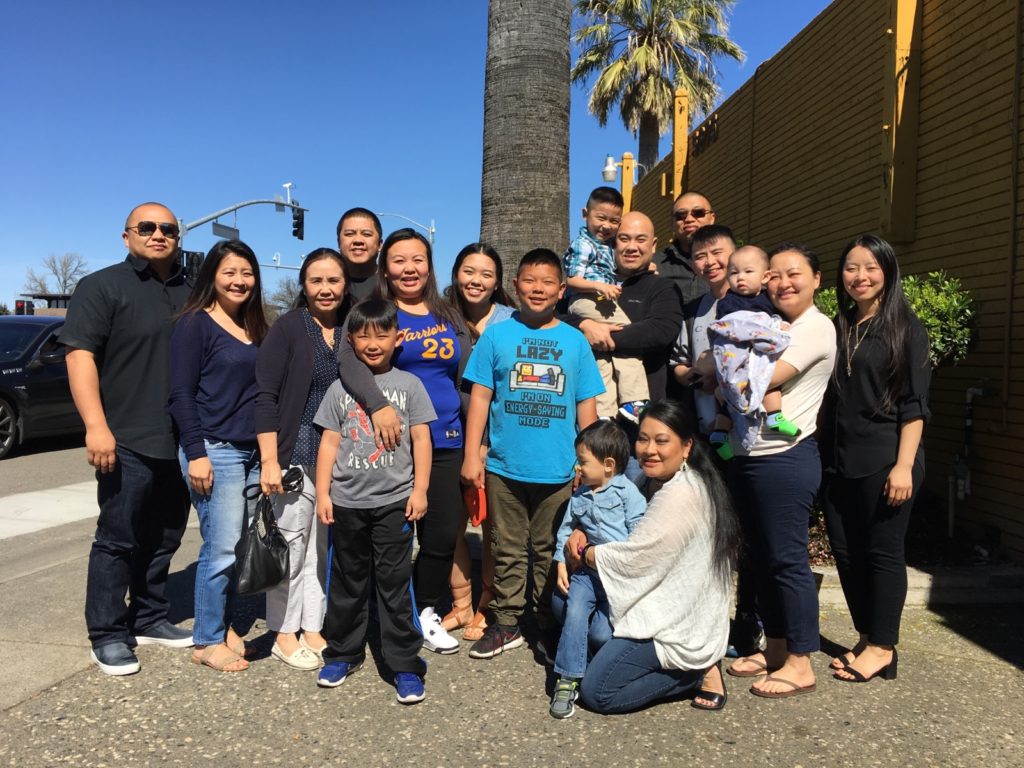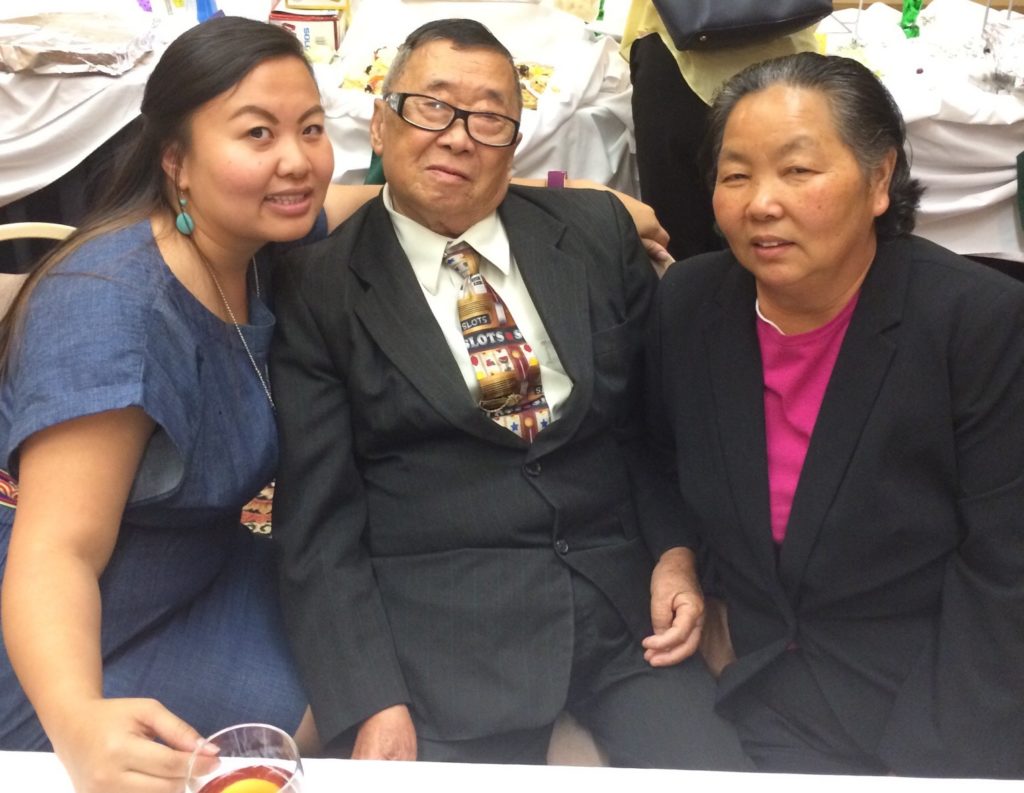May is Asian American and Pacific Islander (AAPI) Heritage Month, and we want to use this opportunity to highlight some of the amazing work that our member organizations are doing on behalf of AAPI elders. We spoke with Nkauj Iab Yang, the California Director of Policy and Programs at the Southeast Asia Resource Action Center (SEARAC). When Nkauj Iab was hired in 2016, she wrote a beautiful blog post about her family and her heritage. Now, we talk with Nkauj Iab about her work with SEARAC and some of the challenges facing AAPI older adults today.
What is your role with SEARAC?
My title is the California Director of Policy and Programs. I work out of our Sacramento office, and I oversee all of the programs that we run and the policies we advocate on behalf of here in California. One of our programs, the Asian American Pacific Islander Boys and Men of Color Coalition Helping Achieve Racial and Gender Equity (AAPI BMoC CHARGE) focused to uplift the challenges and needs of the Asian American and Pacific Islander youth communities, especially in regards to addressing the school-to-prison-to-deportation pipeline. We continue advocate for culturally, linguistically, and age appropriate care, as well as access to affordable care which includes protecting the Affordable Care Act (ACA). It’s important that our communities can engage in individual healing as well as community healing, and we want to bring elders into that work. The Southeast Asian American population is incredibly diverse – we have different religions, languages, cultures, etc. – so how do we ensure that everyone is welcomed into this healing work?

I joined SEARAC in July 2016, and while these issues are not new to me, I’ve really been learning a lot from Quyen and the other staff here about how to advocate for our communities and how to work for policy change that will benefit Southeast Asian Americans (SEAA). I’m working to secure culturally-relevant resources for SEAA communities, especially elders. For example, many of our elders are working as caregivers for their grandchildren. But when parents want to put their children into early childhood education classes, the grandparents feel like they have lost purpose. We’re working to strike a balance between encouraging families to take advantage of educational programs while also ensuring that elders are still contributing to their families.
We’re also helping Southeast Asian elders remain independent by increasing language access and access to culturally relevant aging programming in their communities. It’s big things like cultural competence in healthcare but also little things, too. I took my mom into the doctor’s office for a colonoscopy the other day, and the doctor told her that afterwards she could eat sandwiches, pasta, etc. She was anxious that she wouldn’t be able to eat the Hmong foods that she loves because the doctor didn’t explicitly tell her she could! But of course, she could eat the foods that she loves and bring her comfort – the doctor just wasn’t thinking of those things when he made his recommendations. A doctor more familiar with our culture – or a doctor who is actually a member of our community – would have made my mother more comfortable.
What does AAPI Heritage Month mean to you?
We should celebrate who we are every day of the year, not just for one month! But this is an opportunity for us to really put ourselves out there and educate others about our communities. SEARAC is taking advantage of the month by pushing our ACA comment card campaign (modeled after last summer’s Diverse Elders Coalition #TellACA campaign!). We want AAPI community members to share their stories and comments with us about how the Affordable Care Act has impacted their lives.
We’re also running a youth assessment project in California to try to collect better data about smaller AAPI communities. We hope that the increased focus on AAPI heritage this month will encourage people to fill out the survey, tell their stories, and get active.

Why did you decide to become an aging advocate?
Growing up as a child of Hmong refugees, there are all these layers of challenges that we encounter. There is friction between our parents and us, a big generational gap – these two generations have different lives and different mentalities, but we have to coexist in the same house. As a child, there’s no one to explain to you what your parents went through – war, genocide, survival – and they don’t have a lot of support. We just feel anger and resentment because we don’t understand.
Second-generation Southeast Asian Americans often have to navigate this world on their own. A lot of us feel really confused and angry, and for me, it wasn’t until I had the opportunity to go to college and take ethnic studies courses that I was able to put my family’s trauma and poverty into context. This allowed me to do some individual healing and also rethink my relationship with my parents. I was able to learn how to have conversations with them without re-traumatizing them, and I was also able to forgive them and myself. Even though our parents come here as refugees, don’t know the language, have very little support, they try really hard to take good care of us even though they face so many struggles and challenges.
Why is it that I had to wait until I went to college to come to these realizations? This is when I developed my passion to work with young people, especially SEAA youth, and to challenge them to bridge that gap with our elders. We can’t do community healing, individually or culturally, without involving all generations.
When I was working with Banteay Srei, I got the opportunity to participate in a intergenerational cooking program that brought together Southeast Asian youth and elders to learn from one another. Elders would bring in the ingredients and show the young women how to prepare traditional Souheast Asian meals like Bo Luc Lac, Ka Soy, or boiled chicken over rice. Then the elder would share her refugee or resettlement stories over dinner. This really allowed the generations to engage with each other, and the young women would learn their histories, which often is not taught in the traditional educational system.
Elders are often worried that younger generations are going to judge them, or they are embarrassed about their limited English proficiency. By the end of these sessions, the elders felt validated. They had the opportunity to tell their stories and have someone really listen. This opportunity allowed me to value intergenerational healing even more than I already did.
What is the biggest issue faced by Southeast Asian American elders, and how can our readers help?
Having culturally relevant programs that make our elders feel that they are a part of the community is really important. Our elders’ mental and emotional health play a big part in determining their physical health, so ensuring that they feel listened to and cared for is essential for healthy aging. We want them to feel welcome in healthcare settings, in aging programming, and in senior centers. [For some examples of culturally relevant programming for SEAA elders, check out our blogs about the Southeast by Southeast Community Center in Philadelphia and the Cambodian Association of Illinois. -Ed]
This interview has been condensed and edited.
The opinions expressed in this article are those of the author and do not necessarily reflect those of the Diverse Elders Coalition.

